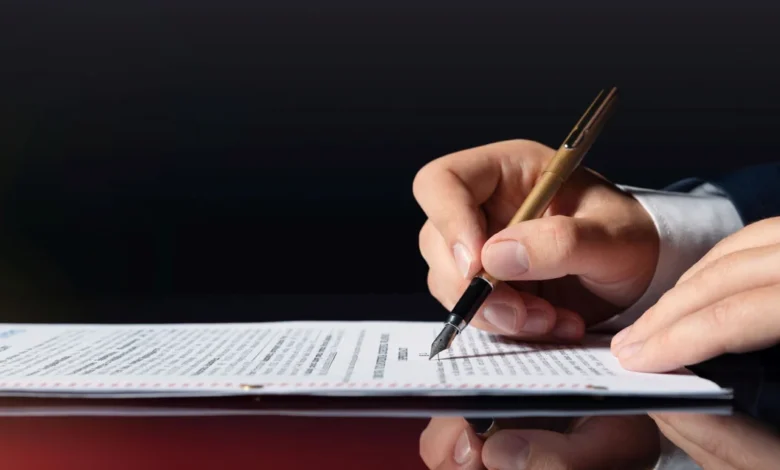How to Translate Documents Accurately: A Comprehensive Guide

As society progresses in an increasingly interconnected manner, the skill of translating text with precise accuracy has grown in importance. In any field of work, be it business, law, or any activity that requires more than one language, ensuring that documents are rendered in the desired language is of great importance. This detailed guide will examine the ways and practices around translate documents, from using the available tools to saying the right thing in a given language.
Why Accuracy Is Important In Translation Services?
Why is the Translation Satisfactory?
Translation of any document is not just translating each word into another language. It is more than just reconstructing the text; it is also expanding by necessity, the meaning and mood of the original document. Perfect translation mistakes ensure no inconsistencies or complexities in reaching a mutual understanding among people from diverse cultures. For instance, a legal statement that is not accurately translated may raise issues regarding the provision in the contract; in contrast, a medical report that has not been adequately translated may pose health problems.
Problems of Poor Translation:
The risk level involved in document translation is exceptionally high. In a bleak scenario, substandard Translation of an internal document may ruin a company’s image, distress business associations, and prompt legal proceedings. In this regard, there is a great need for the accurate Translation of your documents, not just an academic level of sophistication.
Critical Considerations for Translating Documents Accurately
Selecting the Appropriate Translation Style: Different techniques are used to translate a document; each approach has benefits and drawbacks.
The three main approaches are:
- Human Translation: The best way to translate a document is through professional human translators. Since qualified people do it, every detail, especially the cultural subtleties and tone, is preserved in the process.
- Machine Translation: Online translators such as Google Translate or other translate document online services come in handy when a person is pressed for time. However, they lack the intricacies and cultural appreciation that a native translator offers.
- Hybrid Approach: This approach integrates machine translation and utilizes an individual’s assistance. The combination benefits from both methods, while the negative aspects of machine translation are removed through human editing.
Knowledge of Source and Target Languages
One management decision that requires thorough understanding is document translation. This is because languages without substance are clusters of vocabulary only. A statistic that consists only of a language is insufficient for grammar; there are other important factors, such as the history of society and its ethical standards. Therefore, translators must not only master both languages but also be aware of the culture to commit such mistakes. Technical translation involves accurately converting specialized documents, such as manuals and reports, into different languages, ensuring clarity and consistency in complex subject matter.
All about Context:
Another aspect widely contributed to document translation is context. A word or phrase in one context may not work in another. The meaning of idioms, slang, or more advanced technical terms can hardly be transferred unless the equivalent is known.
Documents are Critical to Any Business, and Thus, It Is Advised to Follow These Steps to Transmit Them Accurately:
Research before the Translation.
Pre-translation activity must be performed to assist in the main Translation. Such as:
We are establishing the aims of the document.
- Establishing the audience: Who is the reader of the translated document? This would assist in determining the attitude or word usage that should be adopted during Translation.
- Glossaries compilation: Identify key terms and other phrases from the text that need to be translated into equivalent terms throughout the document.
Tools That Will Help in the Translation of the Document
The selection of the required tools is equally essential for effectively translating the document. Employ a qualified linguist with expertise in your document’s field for human explanation. Choose an honest and accurate translation document tool for machine translation, after which an editor will review the work to ensure no errors.
Proceed with the Translation of the Document
Use a phased approach to tackle the Translation. Follow the procedure below to avoid mistakes in Translation:
Meaning:
Do not change the meaning of the original document during Translation.
- Tone and Style of Word Usage: Apply the same tone and manner depicted in the original document.
- Sensitivity Towards Cultural Differences: Understand the cultural impact on the audience concerning the translation interpretation.
Self-Editing and Peer-Reviewing
As soon as the document reaches the stage of translation, the next logical step is to carefully review and edit it.
This Step Involves:
Proofreading: Look for errors in grammar, spelling, and formatting.
Improving Imperialism, Revolution, and Decolonization through Order, centers the Translation upon the information presented in the document.
Checking with others: Getting the document edited by a different translator or editor can save time and increase precision.
Look for Quality Control
The last step in the process of Translation is an important quality control that needs to be performed. Here, it would help if you did the following:
In terms of terminology consistency, Some terms and phrases should not change in Translation. Therefore, you have to track the correct use of the terminology.
- Checking the translated document for correctness: Look for documents that do not include some sections or parts from the original document that are required to appear in the translated document.
- Checking the ease of understanding: Determine the ease of reading the translated document for the intended readership.
Guidelines for Document Translation:
Use the Help of Professional Translators:
Professional translators are the key to efficient Translation, especially for document translations. This is because professional translators have self-assured companies to cut to the chase: the practice of Translation. The specialists’ resources enable the effectiveness of such translated publications, and regardless of the audience, this will be measurable.
Employ Technology Appropriately:
Human Translation is the best option for accuracy, but technology is sometimes helpful. The online translate documents feature can only be used to generate first drafts or when you have no time for translations, but always have a professional translator cross-check the final draft.
Consistent Language Style:
Attention to detail is often overlooked in document translation processes. Focus on ensuring that the translations you provide speak in the same voice as the rest of the texts. This is crucial for documents such as technical documentation, legal/ regulatory documents, and brand collateral since unified terms help enhance the effectiveness of the document.
Keep track of changes in Translation:
Translation as a field undergoes periodic changes, such as the introduction of new tools, the development of new approaches, and the conception of new trends. Learn new information about translation technology and the optimal ways of delivering subtle messages through your translations.
Accurate document translation is one of the most essential skills in today’s globalized world. Since the Globe has intermingled, countries and people are becoming dependent on one another for trade. Translating legal terms such as contracts, medical reports, or marketing brochures seems easy when one has the expertise and suitable tools for writing rules. You build an understanding of culture, language, trends, and context to ensure that the message you wish to convey in the paper is accurately answered.
Keep an eye for more news & updates on USA Tech Magazine!





